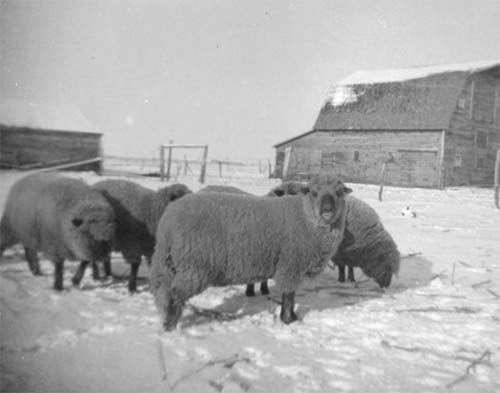Plains Farmstead In Winter, 1920s.
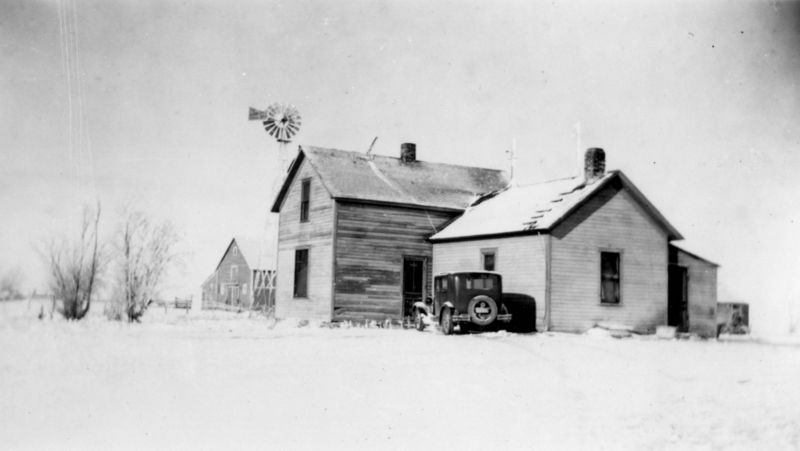
A plains farmstead in the middle of winter, Model T parked outside. 1920s.
Labels: 1920s, early 20th century farm photos, farm life, model t, winter
Threshing Oats, 1942
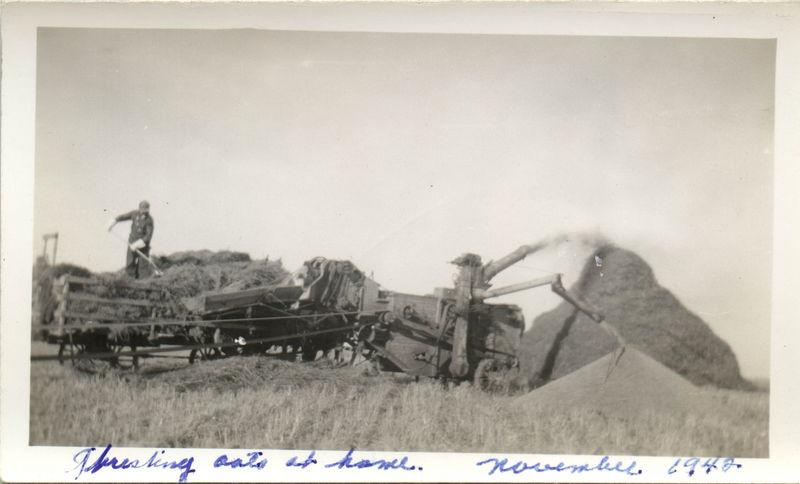
Note reads, "Threshing oats at home. November 1942." If you're in west-central Minnesota, go see this done live at Rollag starting today.
Shady Side of the House, 1930s
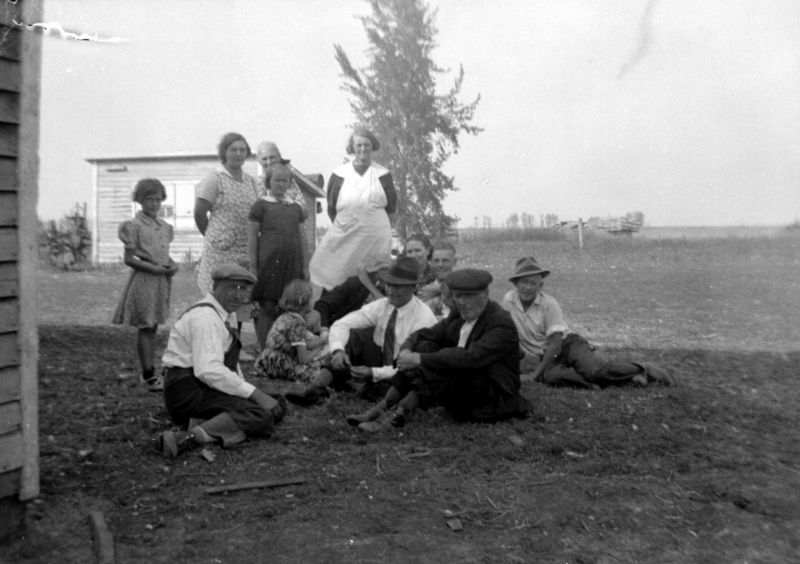
No A/C, no electric fans, the shady side of the house is the place to spend a sunny afternoon. 1930s (more)
Labels: 1930s, early 20th century farm photos, farm life
Norwegian Homesteader, 1910s
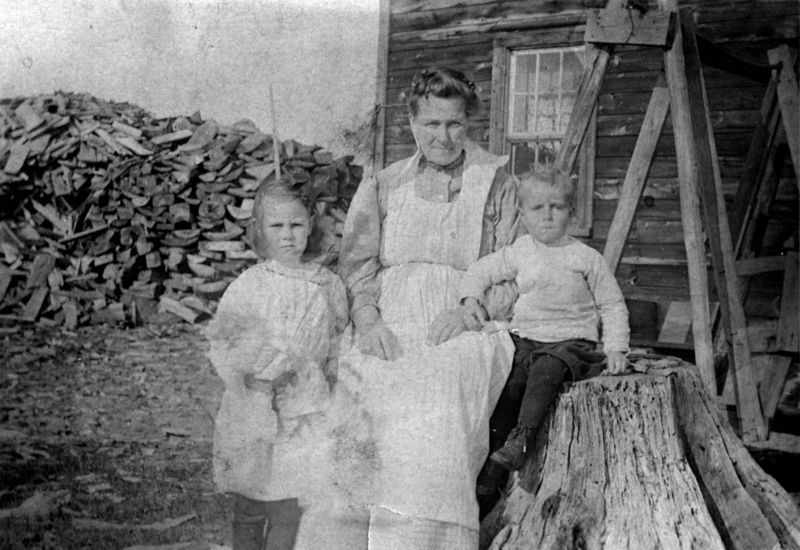
A woman and two children, outside a wooden farmhouse and near an enormous firewood pile. From a photo postcard, 1910s.
Labels: children, farm life, homestead, norwegian, photo postcard
Easter In the 1920s
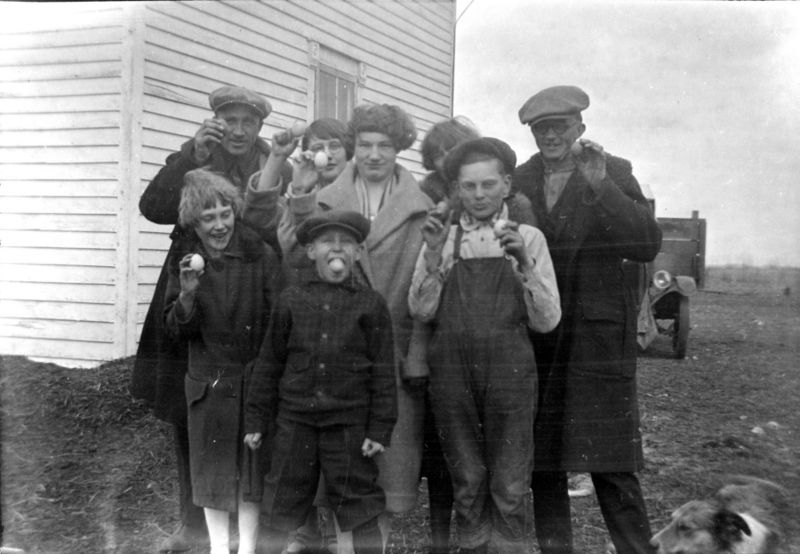
The 1920s send their wishes you a Happy Easter! In this photo, younger versions of the people seen in the Minnesota photo negative set show their Easter morning discoveries. I just hope nobody bumps that kid in the middle too hard.
Labels: 1920s, easter, farm life, minnesota history
A Sea Of Hats: Farm Foreclosure Sale
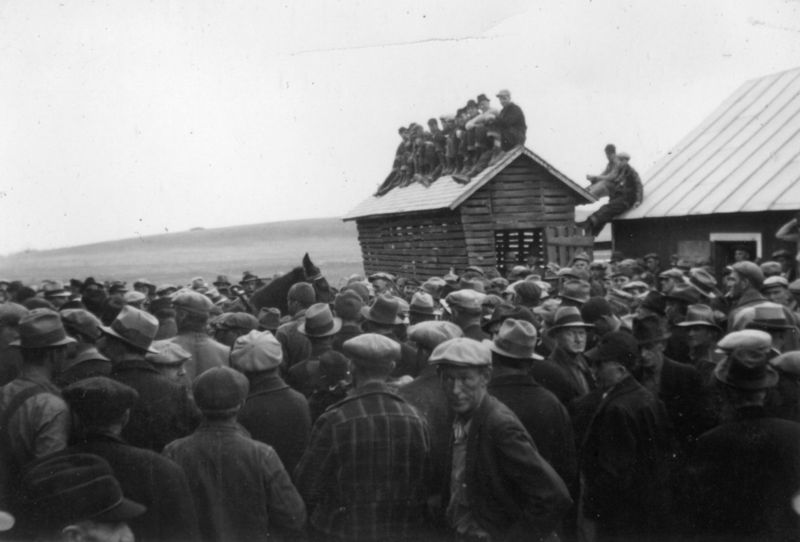 This image, one of two captioned "At Uncle Nick's Auction," shows a common sight around the rural USA during the 1930s. No, not just a crowd of fedoras and paperboy hats (although those were quite common, especially at the employment office or the bread lines). Farm foreclosures were driven by the Great Depression, a sluggish economy, a prewar slump due to foreign instability, and the ongoing change from a raw-materials economy to a manufacturing economy. This one appears to have been taken in 1938, after the "heyday" of foreclosures in the early 1930s. Early on, farmers protested and caused 'penny auctions' -- friends and neighbors ran off genuine bidders, and never bid more than a penny for any lot. By the late 1930s the worst of it was over, some economic reforms were starting to help, and this auction was probably handled better than frantic bank-recoveries earlier in the decade.
This image, one of two captioned "At Uncle Nick's Auction," shows a common sight around the rural USA during the 1930s. No, not just a crowd of fedoras and paperboy hats (although those were quite common, especially at the employment office or the bread lines). Farm foreclosures were driven by the Great Depression, a sluggish economy, a prewar slump due to foreign instability, and the ongoing change from a raw-materials economy to a manufacturing economy. This one appears to have been taken in 1938, after the "heyday" of foreclosures in the early 1930s. Early on, farmers protested and caused 'penny auctions' -- friends and neighbors ran off genuine bidders, and never bid more than a penny for any lot. By the late 1930s the worst of it was over, some economic reforms were starting to help, and this auction was probably handled better than frantic bank-recoveries earlier in the decade. Also: farmer's diary * iowa depression * nebraska foreclosures * remembering farm life
Labels: 1930s, 1938, antique photo, farm life, wisconsin history
Sittin' on Grandpa
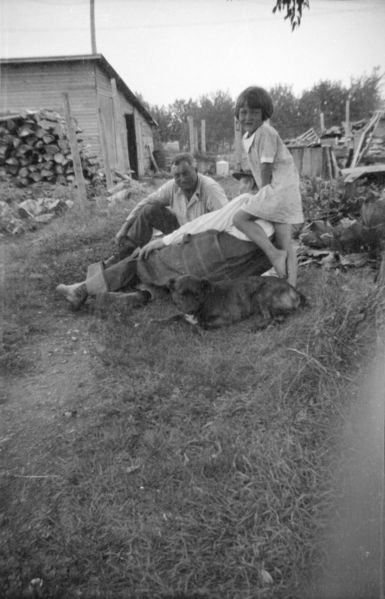 On a hot summer day, sittin' on grandpa is the funnest thing for a pixie-cut girl to do. This photo hails from the late 1930s in rural Minnesota, and is the kind of candid real-life photo you hope to see out of dozens of posed, dour pictures of family members. It's also a part of the farm photos don't usually get taken at --nobody poses in front of the junk pile for a family picture. The jungle-gym is clearly Grandpa: he looks much the same in nearly every photo, up until the 50s. The guy sitting up, I'm unsure who he might be, possibly a hired hand. As a farm kid, I remember those summer days -- "I'm bored; I should go bother Grandpa for a while." Turns out, Grandpas usually spend all day hoping the grandkids stop by to interrupt his work.
On a hot summer day, sittin' on grandpa is the funnest thing for a pixie-cut girl to do. This photo hails from the late 1930s in rural Minnesota, and is the kind of candid real-life photo you hope to see out of dozens of posed, dour pictures of family members. It's also a part of the farm photos don't usually get taken at --nobody poses in front of the junk pile for a family picture. The jungle-gym is clearly Grandpa: he looks much the same in nearly every photo, up until the 50s. The guy sitting up, I'm unsure who he might be, possibly a hired hand. As a farm kid, I remember those summer days -- "I'm bored; I should go bother Grandpa for a while." Turns out, Grandpas usually spend all day hoping the grandkids stop by to interrupt his work.Labels: 1930s, early 20th century farm photos, farm life, grandkid, grandpa
Laziness and the P.W.A.
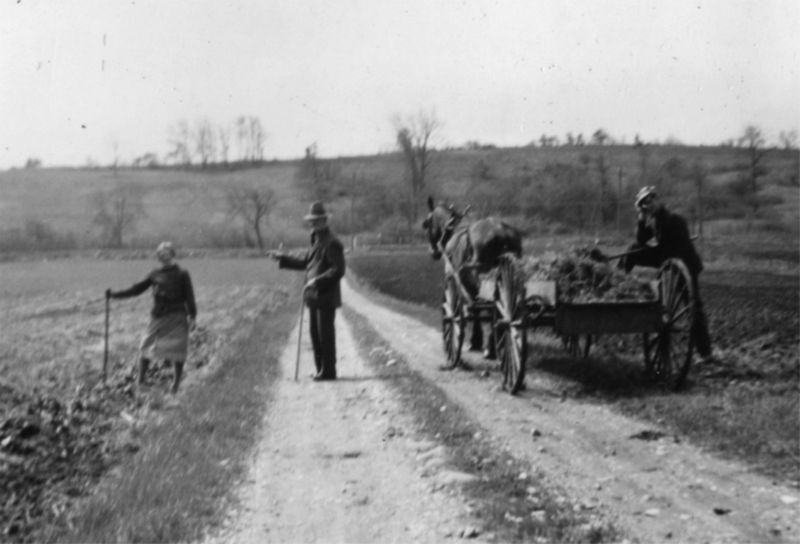
In 1933, the US government starting putting a large amount of money into public works, helping the economy, building communities, and keeping people working. The PWA, or Public Works Administration, did a lot of high-profile work, but the PWA helped communities and projects of all sizes. This picture was captioned "P.W.A. Workers" -- however, they look hardly like a PWA project. The owner of the photo album had a sense of humor; the PWA (and its relative, the WPA) had a somewhat undeserved reputation for laziness. Ms. Photographer, it seems, saw a woman in the field -- and the guys not working -- as representative of the PWA, whether or not their paychecks came from the New Deal or not.
see also: the pwa *pwa thoughts * *pwa and nat'l parks * the wpa * wpa murals * wpa in georgia * wpa posters
Labels: 1930s, 1938, farm life, farming, public works administration, pwa, wisconsin history, wpa











